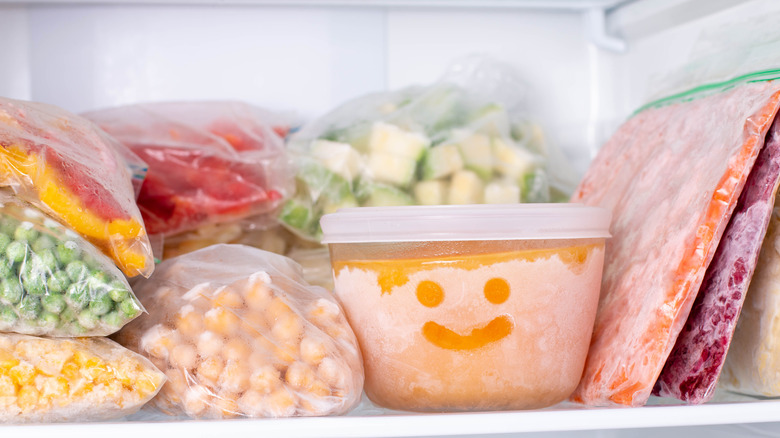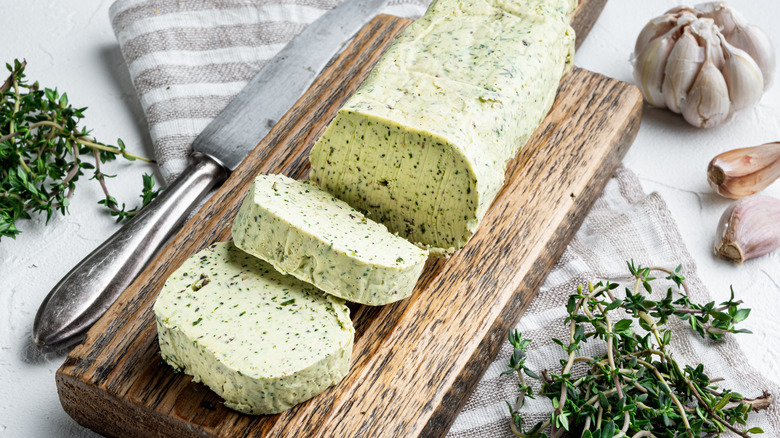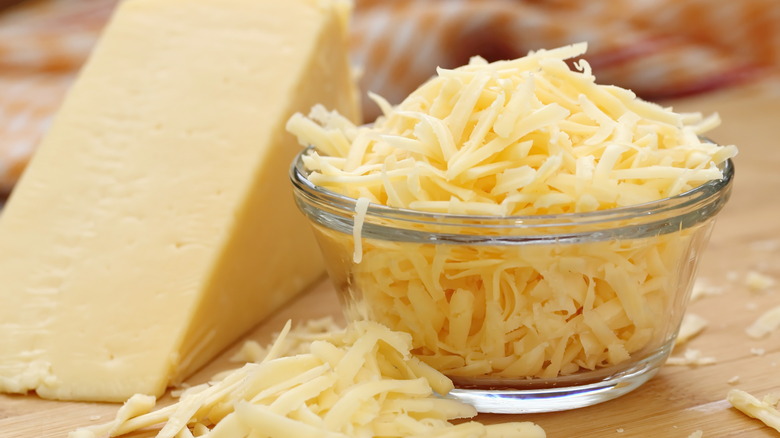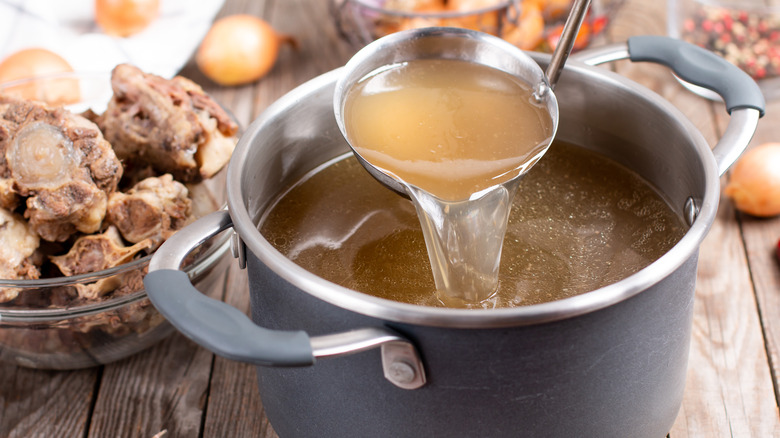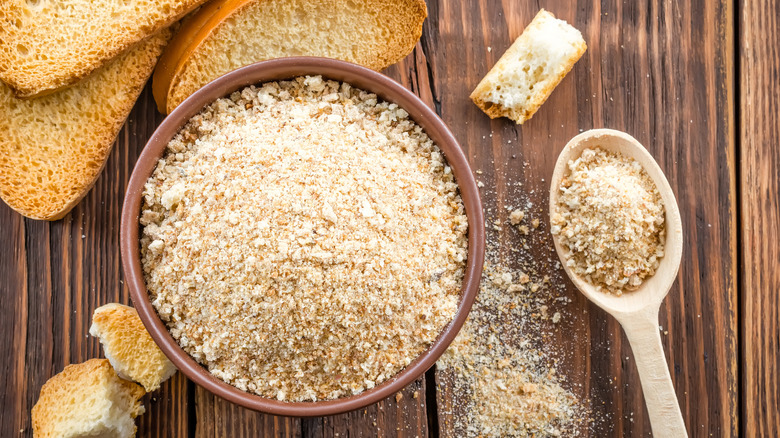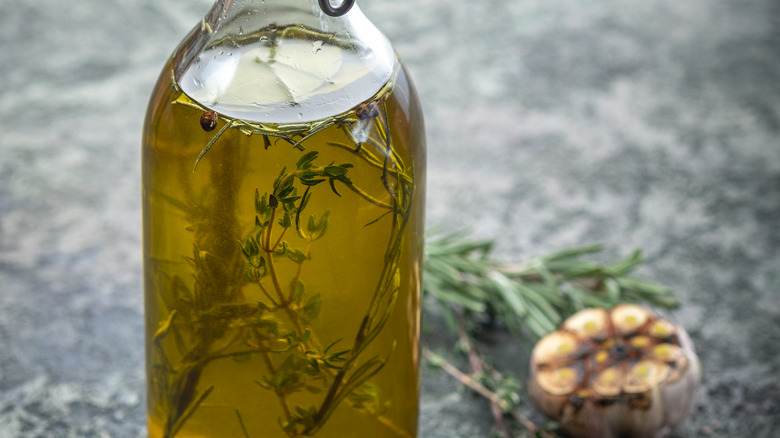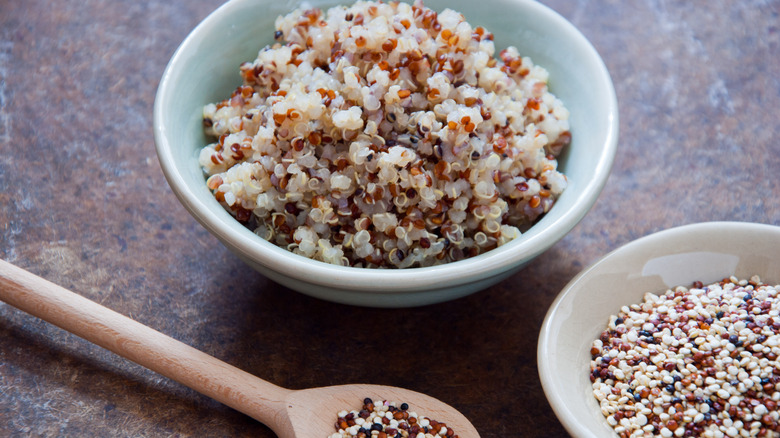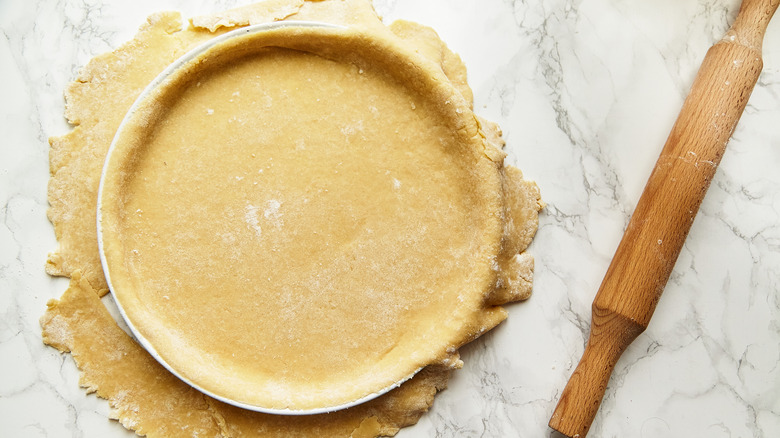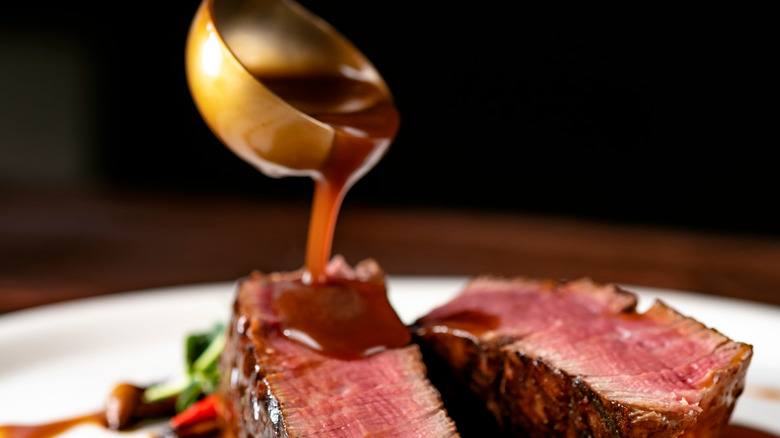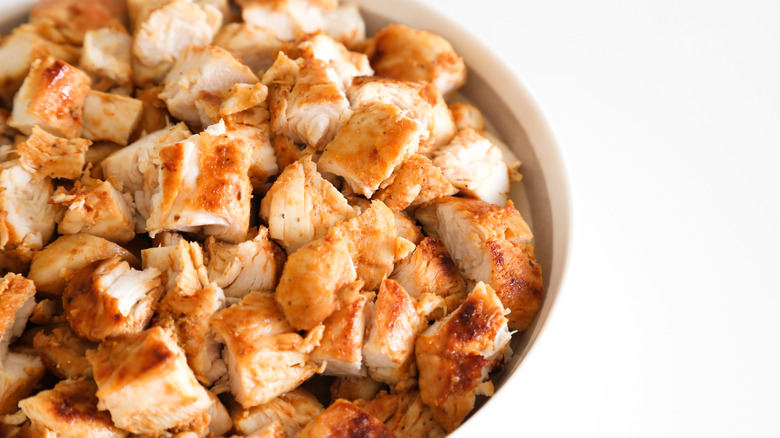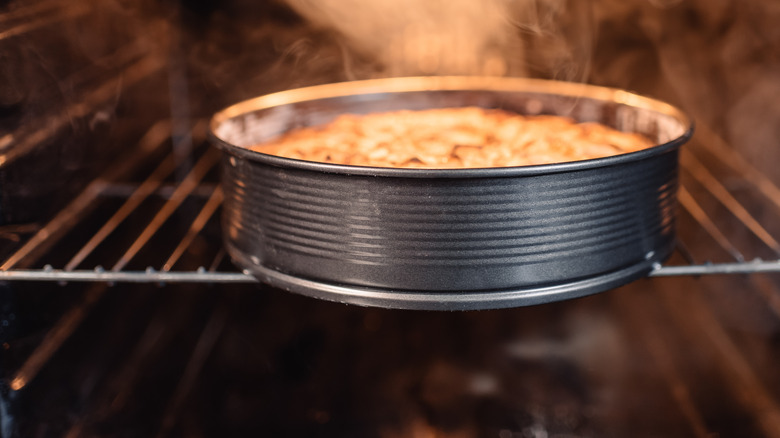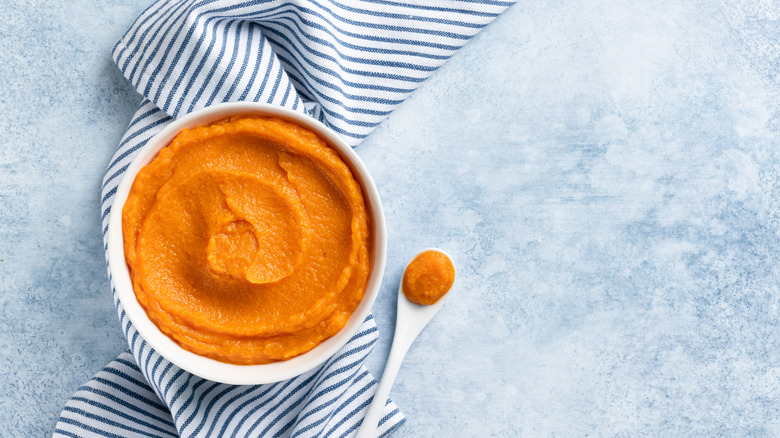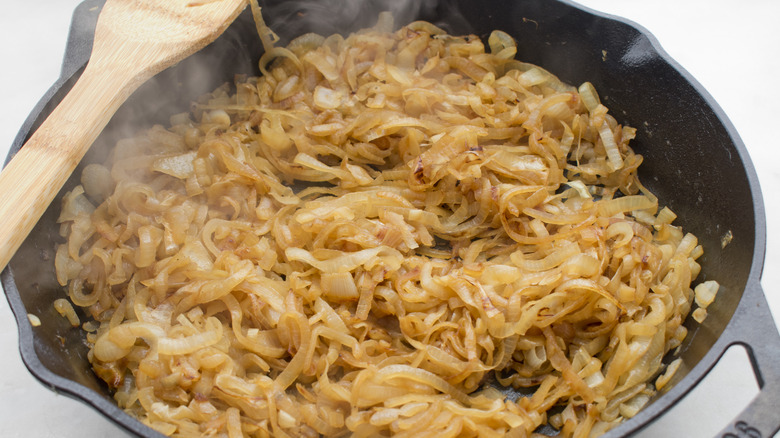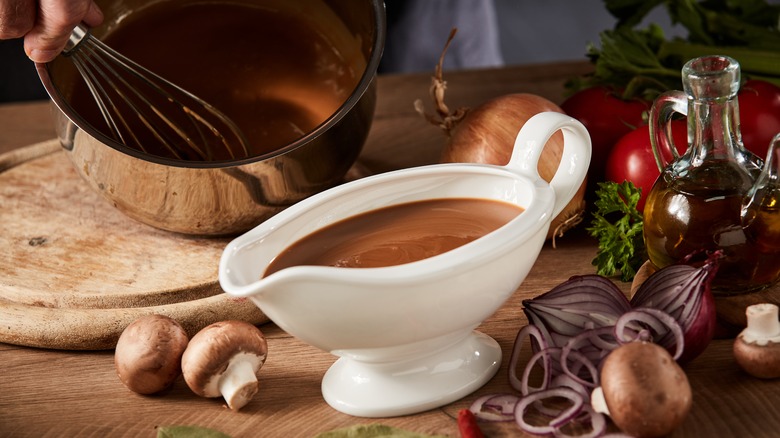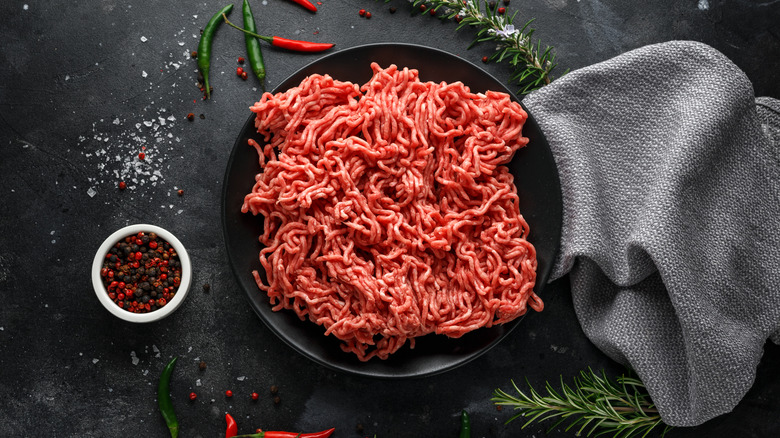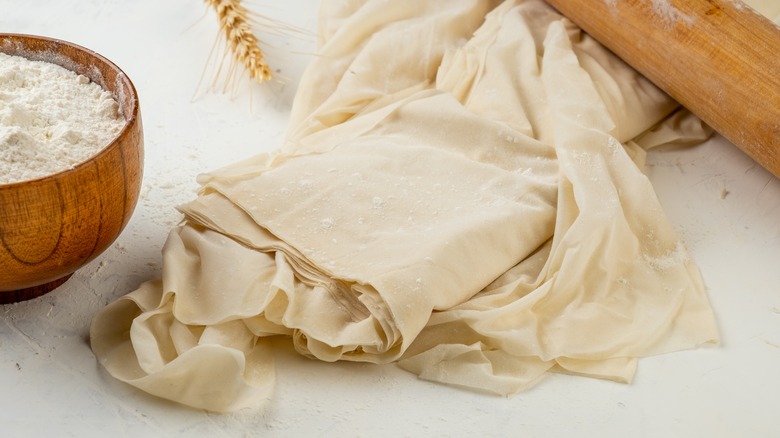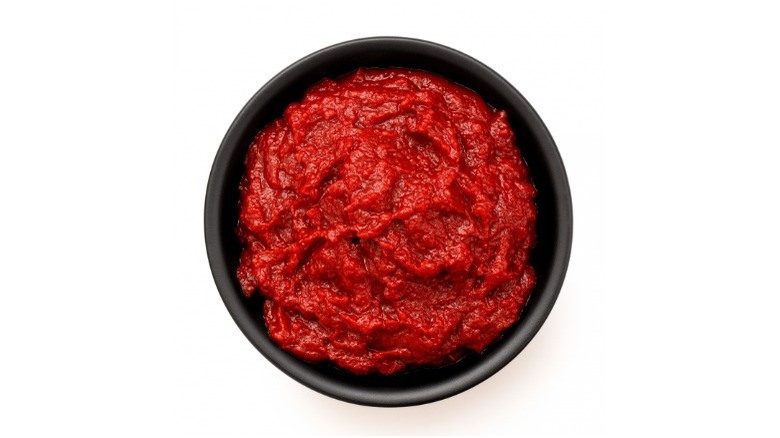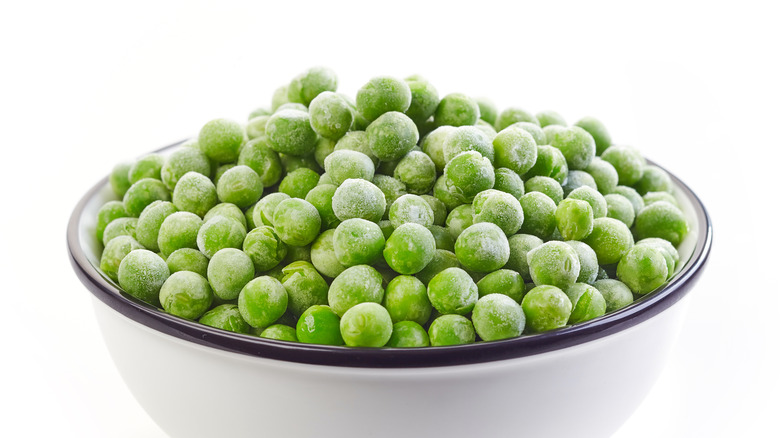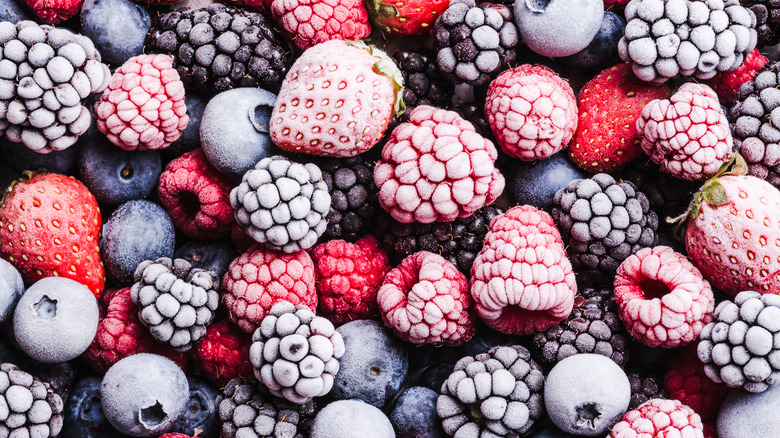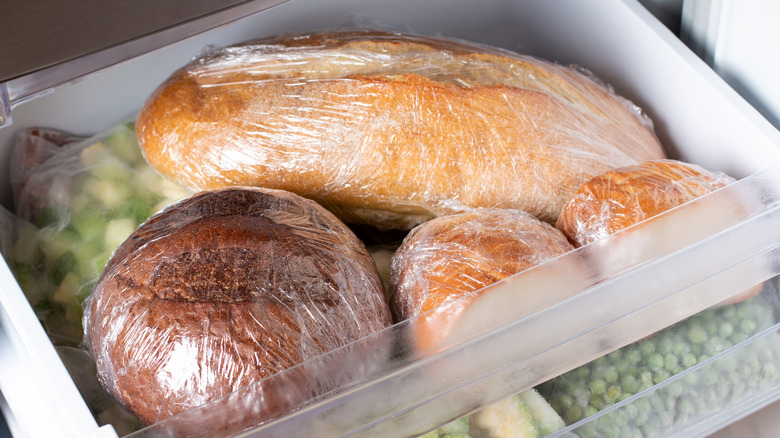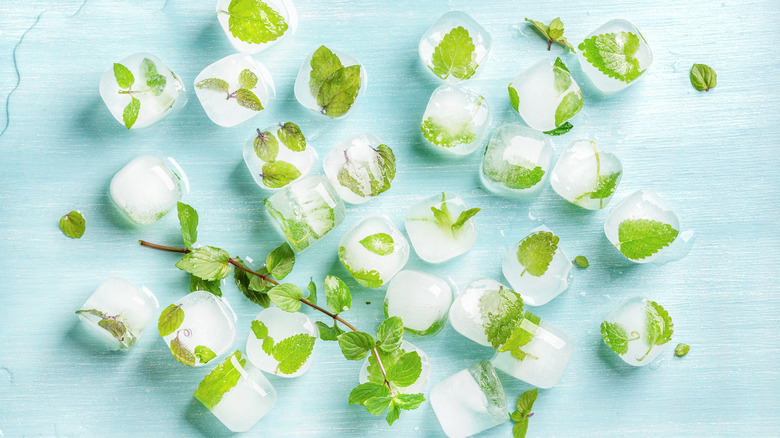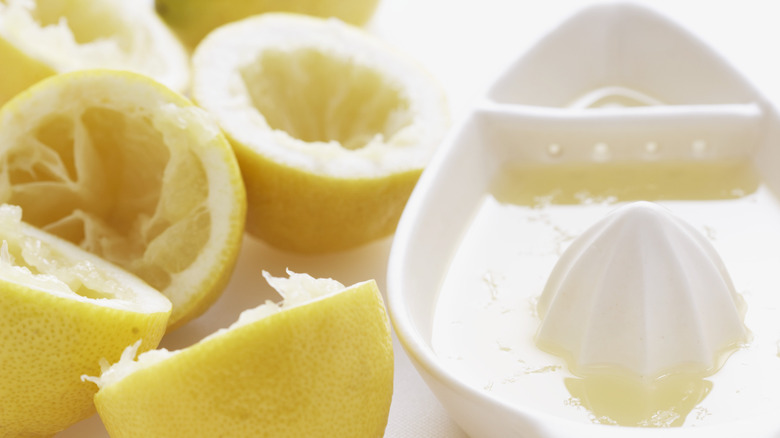22 Frozen Foods You Should Always Have In Your Freezer For Cooking Emergencies
Whether you are having a true kitchen emergency (like you just burned your steak), or the emergent situation is just absolutely nothing in the fridge for dinner, it can really pay off in the long run to stock your freezer well. We're not just talking about frozen pizzas, but ingredients and various prepared items that will go a long way to staving off a case of the hangries. Purees, sauces, cooked proteins, and various fruits and vegetables come in clutch when trying to stretch the time between grocery runs.
Filling the freezer with a solid assortment of foods makes it easier to cook homemade meals and keeps you from ordering out again — just make sure you don't make the same mistakes everyone makes with frozen food. Even the smallest freezers have room for a few of the choices on this list, so do your future self a favor and set yourself up for a cooking emergency of any kind.
Compound butter
We love compound butter for its ability to transform a simple meal into something decadent and special. Professional chefs and home cooks alike love to make these butters for use on steaks, roast chicken, or even just spread on a baguette. With a few spare ingredients, you can preserve tasty flavors for weeks or months to come with the help of some creamy butter.
The sky's the limit when it comes to making compound butter yourself, which typically uses some combination of herbs, spices, and other aromatics like garlic or shallot. For a twist, Chef Ed Lee's best compound butter for steak calls for a combination of sugar, spicy Korean chili flakes, and a dash of sesame oil and soy sauce.
Grated cheese
Cheese that comes pre-grated in bags at the supermarket is helpful in a pinch, but it comes loaded with anti-caking agents and other preservatives to prevent spoilage. Grating it yourself means you avoid these unwanted fillers, though it can be a literal pain to grate a ton by hand. If you have a grating attachment for your food processor, you might find it well worth the effort to grab a few bricks of cheddar or Swiss on sale and pass them through the machine. Bag them up and stash them in the freezer to save a step the next time you want to make macaroni and cheese or homemade pizza.
Chicken and vegetable broth
If you already know how to stock your freezer well, then you likely have an assortment of chicken carcasses and bones ready to make some homemade stock or broth. Making a large batch is definitely the most efficient way to go about it and that leaves you with plenty left to freeze for later.
Even if you don't have time to make some yourself, a few quarts of chicken, beef, or vegetable broth are vital ingredients that you should always have on hand for soups, sauces, and other recipes. If nothing else, a bit of broth in your freezer could be a lifesaver next time you have a cold and can't muster up the energy to cook.
Bread crumbs
Dried breadcrumbs should be a constant fixture in your pantry, but fresh breadcrumbs can be harder to keep on hand without going stale or molding. Some recipes are just better with fresh breadcrumbs, like homemade meatballs or eggplant Parmesan. Even if you end up drying or toasting the breadcrumbs anyway, fresh breadcrumbs have a better texture and flavor than store-bought.
Make some homemade breadcrumbs in a food processor and save them in the freezer in a tightly sealed bag, ready to be used any time you find the need. For added flavor, mix them with some chopped herbs, garlic, or grated citrus zest.
Herb oil
Some herbs don't last long in the refrigerator and turn black at the soonest sign of frost. A good way to preserve the flavor and color of herbs is to infuse them into an oil and freeze that. The oil protects the herb from the harsh environment of the freezer, and in turn, the oil takes on the flavor of the herbs. Slightly warm the oil with the herb of your choice, then pour it into ice cube molds and freeze.
To protect the cubes from taking on any strange freezer flavors, some softer herbs like cilantro or chives benefit from a quick blanch and shock to fully ensure there is no loss of that gorgeous green color. Blend the herbs into the oil, if you wish, or strain for a gorgeous, clear green oil. Basil oil is delicious on a pizza or drizzled over tomatoes, and thyme or rosemary oil can be used to marinate olives for a quick and fancy appetizer.
Cooked grains
Depending on the type, it could take up to an hour (or more!) to cook grains on the stove. Wheat berries, farro, and quinoa are just some of the many grains you should have on hand for adding to salads or soups. Make sure to do your homework for this particular project, as the right practices can make a huge difference. For example, the right way to freeze rice is to partially undercook it and then freeze it in a flat layer before bagging it up and storing it.
Most grains can freeze perfectly fine without any loss of texture, but the kinds that tend to be on the softer side when cooked should be avoided (think millet, amaranth, and teff).
Pie dough
Pie dough is a hassle to make and requires a hefty amount of resting time on top of the prep. Luckily, it freezes well as a block of dough or when rolled out as a sheet (though it should be tightly wrapped either way to avoid the dreaded freezer burn). If you don't fancy yourself much of a baker, pick up a roll of store-bought dough to have on hand. Having some stashed away gives you the option of whipping up a sweet or savory pie for dinner, or making a few quick appetizers to serve to uninvited guests.
This trick also works for tart dough, which may even benefit from a spell in the freezer to avoid shrinkage. Take it a step further and have some pie or tart dough rolled out and pressed into a baking pan to really be ready to go.
Demi-glace and braising liquids
Roasts, braises, and sauces like demi-glace are time-consuming to make, which is a bummer because they add so much flavor to any meal. Next time you spend the time to make one of these cooking projects, consider saving some or all of the liquid for later use.
Really, any kind of braising liquid or jus can be saved for use in the future. For example, if you braise some spicy carnitas, save the liquid that's left behind after straining out the pork and use it for a quick (but super flavorful) pozole or tortilla soup. If you aren't planning to use the pan drippings from a roast chicken, stash the liquid in your freezer so you have a quick burst of flavor in your back pocket.
Cooked chicken or beef
One of the best ways to set yourself up for the future is to cook a little extra chicken breast or steak when making dinner one night. A few cubes of cooked chicken or steak in your freezer can mean the difference between a super-quick meal and an hours-long culinary slog. Toss a few on a tray of nachos (before baking), or heat them up with some spices and put them in a tortilla for tacos.
Frozen cubes of chicken or steak can be easily thawed in a casserole or baked pasta dish. Cooked steak can be transformed into braised beef dishes, like a steak and ale pie or steak chili.
Cakes
Slabs of cake keep very well in the freezer if properly wrapped. If you have the space, freeze a few rounds of a basic cake flavor and you'll be able to whip up a last-minute birthday cake in no time at all. Frozen cake can be cut into smaller sizes for things like petit fours or even broken up into chunks to make a trifle or a sundae.
This hack works best for simple sponge cakes like classic vanilla or chocolate, and not so much for more delicate versions like angel food or cheesecake. Frosted cake can also be easily frozen, but you will probably want to tack on an extra layer of frosting for the best visual results.
Purees
A great homemade puree isn't just for babies. Any time you go through the trouble of pureeing vegetables or fruits, you can save a cup or so for future projects. A pint of butternut squash puree can be transformed into a soup with just a bit of time and some added ingredients. Mashed banana saves you a step when you go to make banana bread.
Everything from sauces to pies can be made with a bit of stashed puree. Squash and pumpkin purees save very well, as well as cauliflower, carrot, and parsnip. Just remember to skip the potato — it tends to turn grainy when frozen.
Caramelized onions
Perfect caramelized onions can take as long as an hour to make, but the payoff is so worth it when you taste that delicious flavor. The great news? Caramelized onions freeze exceptionally well. If you are already committing to making a batch, why not double it and save some for yourself for later?
Sure, a pint of frozen caramelized onions on their own won't make a full meal, but that doesn't mean you won't find plenty of places to use them up. Soups, sandwiches, or even a simple dip can all benefit from a boost of flavor from caramelized onions.
Gravy
Gravy, like the brown kind you put on Thanksgiving turkey, both freezes and reheats extremely well. It can be tricky to make and it's not often that you have access to the pan drippings needed to make a batch, so freezing any you have left over will pay off big time down the road.
As we all know, gravy is delicious on mashed potatoes, but it can also be stirred into a ragu or pot roast for extra flavor. Gravy can be reheated on its own and some constant whisking will keep it from breaking. If it does break, make a new roux and add the thawed gravy back in to bring it back together.
Ground beef
Ground beef, either raw or cooked, can be a true lifesaver in the kitchen. This ingredient is the foundation for so many recipes, from burgers to chili to meatloaf. This may not exactly be a revolutionary idea, though there are bound to be some mistakes you're probably making when it comes to freezing ground beef. If you avoid these pitfalls, frozen ground beef can have the same quality and texture as fresh. Freezer burn is one of the most common of these headaches, so make sure to wrap tightly and vacuum seal, if possible. That way, you can also take advantage of steep discounts on bulk ground beef.
Phyllo dough
Though a bit less versatile than standard pie dough, phyllo dough is an indispensable item to have in your freezer. A roll of this pastry plus a bit of frozen spinach can be transformed into a gorgeous spanakopita or baklava. Phyllo can even be used in place of pie dough in certain recipes, like quiche or fruit pie. Yes, you could make your own, but the store-bought kind is so great, and if it's good enough for Ina Garten, it's good enough for us. Make sure to thaw the dough carefully and handle it gently to avoid tearing.
Tomato paste
Tomato paste is one of those tricky ingredients that you never seem to have enough of when you need it, yet there's nothing else that works quite right as a substitute. Leftover tomato paste left in the can is a recipe for foodborne illness but there is a little kitchen hack that can help. Tomato paste freezes and thaws well, so next time you need some, pick up a big can and freeze the leftovers in an ice cube tray. Pop the cubes out and put them in a labeled bag to use later for pasta sauce, braises, and more.
The same goes for other canned tomato products, such as crushed or diced. Frozen raw tomatoes have a tendency to get grainy, so leave those at room temperature.
Frozen peas
Fergus Henderson once said, "A wise old chef once told me: Wait till peas are in season, then use frozen" (per Saveur). Many chefs and home cooks know that frozen peas are a vital ingredient to keep in the freezer at all times and may even be better than fresh peas in some instances. The textural reason frozen peas are better than fresh is that this vegetable is picked at peak season and won't lose that texture once frozen and thawed, unlike starchier veggies like green beans or broccoli.
Frozen peas are good for throwing into a pasta or making casseroles and chicken pot pie. Really any recipe where you want to add a spot of green color and a nice, sweet flavor can benefit from the addition of a few frozen peas. To thaw, simply cover with room temperature water, then drain and dry.
Frozen berries
Many people keep frozen berries on hand to throw into a smoothie, but the uses for these frosty fruits go far beyond that. The baking recipes themselves are numerous, and a few cups of frozen berries along with some frozen pie dough is all you need to make a fresh, tasty pie, not to mention the wide world of cobblers, tarts, bars, scones, and cakes.
While mixed berries are great for a smoothie, you will want to keep your options open by freezing the various types individually. That way, if you find a recipe for a killer blackberry sauce or strawberry jam, you won't have to pick through a bag of assorted fruit. If you are freezing your own fresh fruit, scatter them on a Silpat-lined baking sheet and freeze until solid before bagging up for best results.
Bread
Bread should be a constant resident in your freezer. Most types of bread can be re-crisped from frozen to basically the same texture and quality as when it was fresh. Not only can this help bring a special starchy side to an otherwise humdrum meal, but buns of all kinds can be kept frozen and ready to open up your options for dinner.
Things like meatball subs, turkey burgers, and French onion soup are now just a few short steps away from filling your belly. A good loaf of frozen bread can be turned into crostini for a last-minute appetizer, or cubed up to make stuffing (with the addition of a few vegetable staples). Always wrap bread tightly before freezing to avoid freezer burn.
Herbs
Herbs notoriously have a short shelf life in the refrigerator, leaving you to use them up pretty much the day you buy them. You can stretch the shelf life a bit by freezing them, though the success of this hack will vary from herb to herb. Cilantro holds up surprisingly well in the freezer, though you will have to chop up the leaves and freeze them in water poured into an ice cube tray for the best results. This trick also works for herbs like mint, marjoram, or oregano.
Woodier herbs like thyme or rosemary can be frozen on the sprig, but some herbs like basil will never last and should be skipped altogether. Keep in mind that frozen herbs will never be exactly like they were when they were fresh, but with a little creativity could come in handy in a pinch.
Citrus juice
Citrus lasts a long time in the refrigerator, but that doesn't mean you never find yourself totally out right when you need it the most. Even though when it comes to cooking with lemon, fresh is always better, sometime it's better to have something than nothing at all. A few cubes of lemon, lime, or orange juice come in clutch for making a quick sauce or to add flavor to a baked fruit dish like cobbler or pie.
For an added boost, you can even freeze some grated zest in with the juice. The flavor in the zest is well preserved by the freezer and helps the juice taste fresh (even when it isn't).
